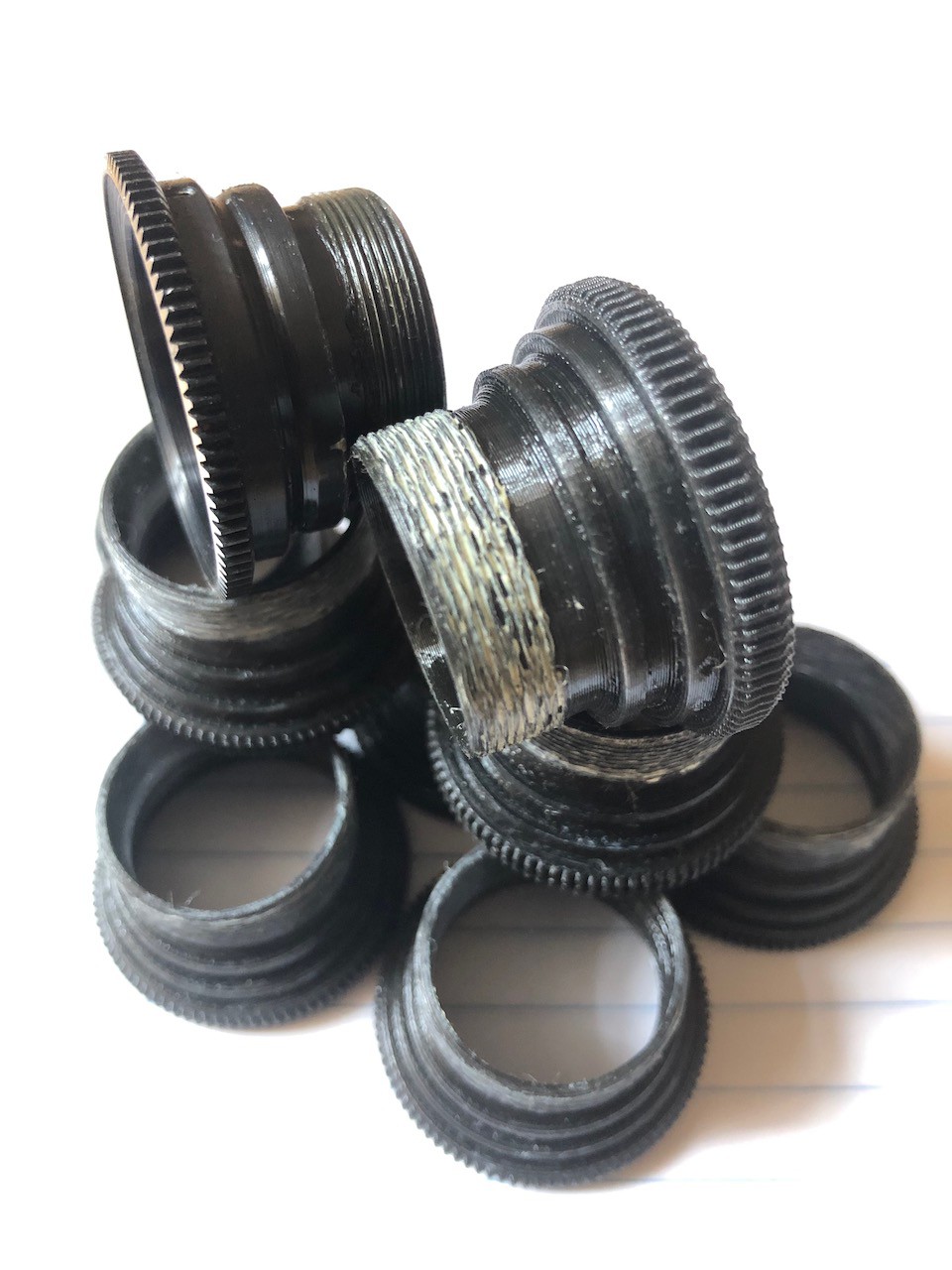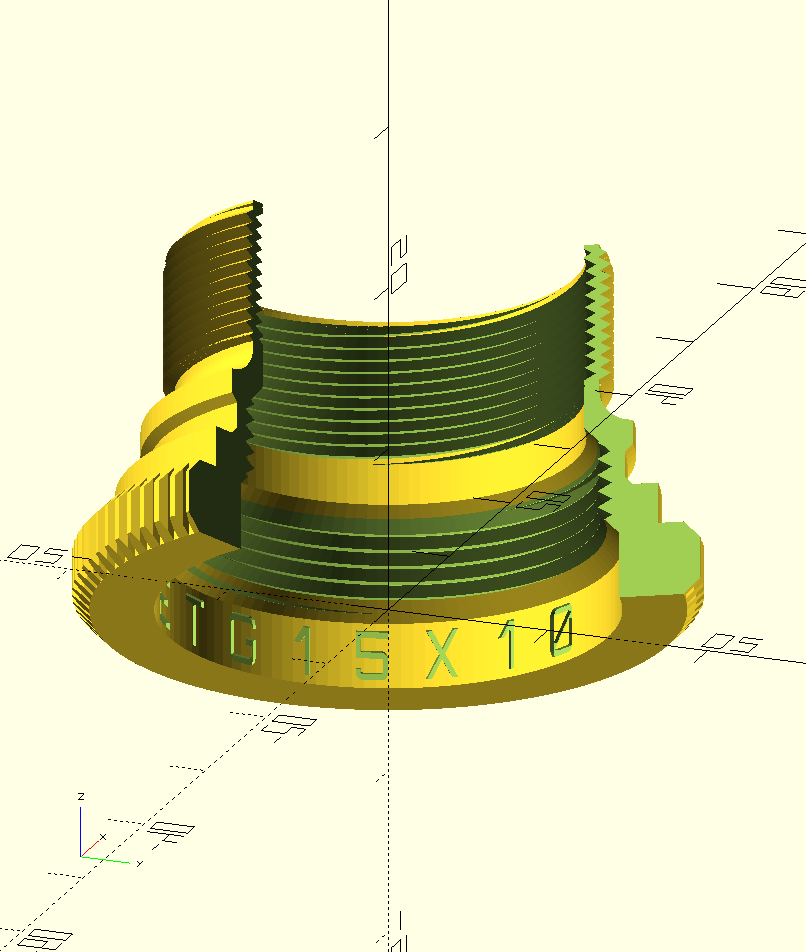Once I identified the reason for the enormous backlash and came up with a method that would resolve the issue, I reverse engineered the design of the original lens rim. Then I created a 3D model with OpenSCAD and printed the first PoC. This first prototype of the replacement lens rim showed that a conventional 3D printer (0.45 mm nozzle, 0.20 mm layer) gives the level of precision comparable to the original aluminum rim.

Inspired with the first results, I started adjusting the 3D model. It took me more than twenty intermediate prints to finalise the design. Here are the main improvements: a longer screw thread compared to aluminum rims; chamfers interspersed here and there to increase strength; a printing-friendly approach (less plastic, faster printing).

While printing replacement rims and attaching them to each of the available Lubitel cameras, I learned that each camera requires a specific replacement rim that matches the camera. Moreover, the 3D printer and filament being used do affect matching. For that reason, I generated five slightly different STL files. I labeled each file with two numbers. The first one denotes the rated backlash value of the outer screw thread: 0.10 mm, 0.15 mm, 0.20 mm, 0.25 mm, 0.30 mm. The second number denotes the rated tightness of inner screw thread (the thread for the lens itself). It seems, that 0.10 tightness works well in most cases (though this is not the case with the outer thread). My recommendation is to start with the 0.20 mm STL file to see how the printed replacement rim fits into the camera body. If it is too tight, then try the 0.25 mm STL. If it is too loose, then try the 0.15 mm STL. If after the first iteration the rim doesn't fit well, go to the 0.30 mm STL and 0.10 mm respectively.
Discussions
Become a Hackaday.io Member
Create an account to leave a comment. Already have an account? Log In.